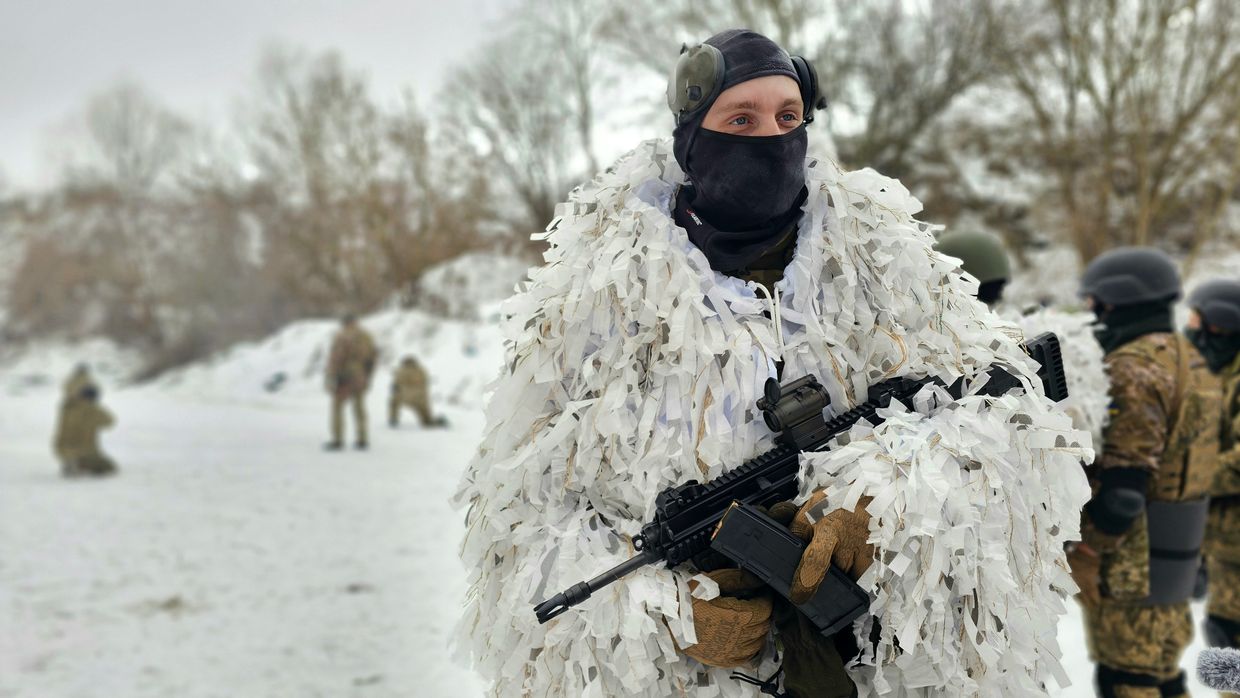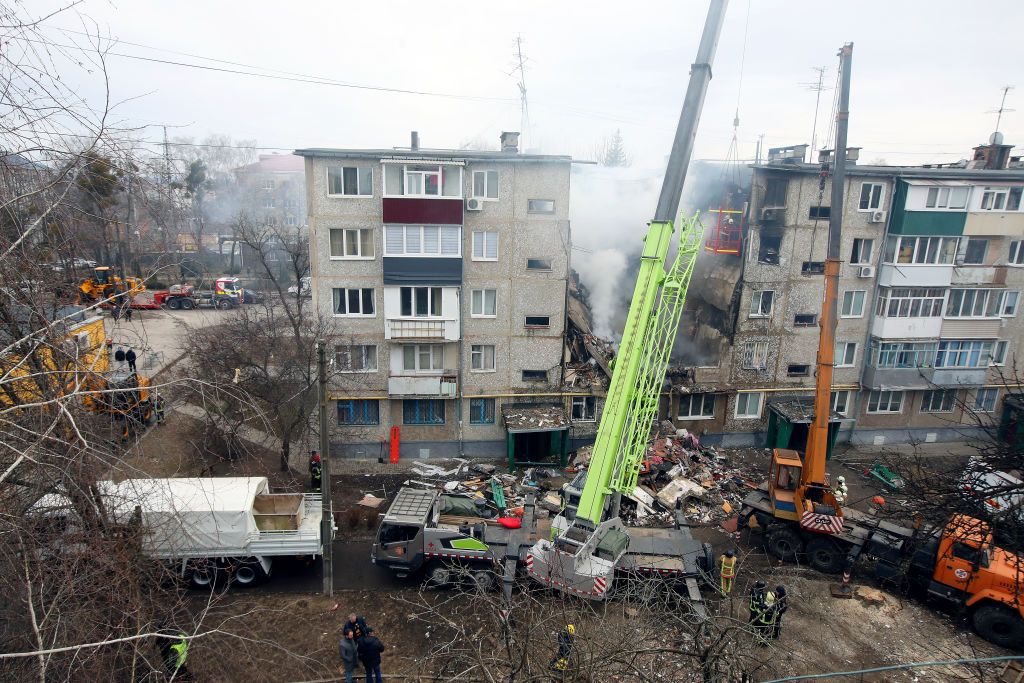What we know about anti-Kremlin militias' raids into Russia

In the early hours of March 12, three anti-Kremlin Russian armed groups announced they had crossed the border into Russia's Belgorod and Kursk oblasts, promising "to fight the criminal Russian regime" with "weapons in hand."
The footage capturing the crossing revealed that the fighters were well-armed, including with armored vehicles and tanks, though the overall number of personnel and equipment was unclear.
Two of these Ukraine-based units – the Freedom of Russia Legion and the Russian Volunteer Corps – made themselves known during previous cross-border raids in the spring and summer of 2023. This time, a brand new formation has reportedly joined the fray: the Siberian Battalion, with fighters from Russia's Siberia.
Opening shots
On the first day of the attack, the militias claimed to capture the village of Tyotkino in Kursk Oblast.
The Russian Defense Ministry quickly stepped in that very evening with the announcement that "Ukrainian saboteurs" were repelled while suffering over 200 casualties and losing seven tanks, five armored vehicles, and other heavy equipment. The ministry released videos allegedly taken in Tyotkino, which the militias claimed to have captured early on.
While these figures cannot be independently verified, the Russian Defense Ministry published footage purportedly showing some of the disabled hardware, including a tank and a U.S.-made Bradley Fighting Vehicle.
The supposed presence of such valuable equipment in the hands of the Russian militias raises the issue of support that Kyiv throws behind these campaigns.

Ukraine's military intelligence spokesman Andrii Yusov said the militias are comprised of Russian citizens who are part of Ukraine's "defense and security forces" but stressed that their incursions into Russia are not taking place under Kyiv's orders.
"On the territory of the Russian Federation, they act absolutely autonomously, on their own, and pursue their social and political program tasks," Yusov told the media.
Kyrylo Budanov, the military intelligence chief, said that anti-Kremlin militias had been helping Ukraine from the very beginning of Russia's full-scale invasion, and Ukrainian forces would try to support them as well "to the extent possible."
Despite Moscow's confident announcement of fending off the incursions, fighting in the border regions only grew. Tyotkino would remain the site of hostilities, as the Freedom of Russia Legion published a video early on March 13 allegedly from the "liberated part of Tyotkino."
The independent Russian outlet Agentstvo's geolocation efforts placed the footage in Rhyzivka, a Ukrainian border village a few hundred meters from Tyotkino. A member of the legion told Agentstvo that the footage was taken in Rhyzivka but claimed that at the time of the video's publication, militias had already entered Tyotkino.
Oleksii Baranovskyi, a fighter with the Freedom of Russia Legion, said on Ukrainian national television on March 13 that battles were taking place in at least five border settlements.
Russian forces reported another attack by the militias near Tyotkino the following day, while the legion published footage of their forces supposedly destroying two ammunition depots in the village.
No clear plan
As the border clashes enter their ninth day, the overreaching goal of the raids – and what palpable gain Kyiv stands to win by devoting precious equipment – remains vague. While the legion declared that their ultimate target is to "march on Moscow" and overthrow Vladimir Putin's regime, even they admit this is not a realistic scenario in the foreseeable timeline.
The timing of the raids, coinciding with the Russian "election-style event" that secured another six years in power for Putin, is not a coincidence, as the fighters admit.
"We may not be able to stop the federal election, but we can disrupt the regional votes, so we are doing what we can by bringing this 'air of freedom' to at least some parts of the country," Baranovskyi told Newsweek.
Fighters told the outlet that the incursions by anti-Kremlin groups aim to galvanize domestic Russian opposition, calling for "an uprising, a revolution" against the Kremlin.

Public displays in opposition to Putin and the ongoing war against Ukraine have become scarce in Russia amid a tightening crackdown against any hint of dissent.
Alexei Navalny, the most prominent leader of anti-Putin political forces in the country, died in prison last month after years of harsh imprisonment. His supporters were arrested for merely laying flowers at Navalny's memorials.
Meanwhile, interviews conducted by the Washington Post suggest that at least some Belgorod Oblast residents have only hardened their loyalty to the regime. Especially as the cross-border incursions were accompanied by an uptick in alleged drone and rocket attacks against the bordering region.
Per their custom, Ukrainian officials have not publicly commented on these attacks.
Belgorod Oblast, bordering Ukraine's Luhansk, Kharkiv, and Sumy oblasts, is often used by Russian forces as a staging area for attacks against Ukrainian cities and villages.
"The shelling of Ukraine from the territory of Belgorod must stop!" the militias announced, saying that they had been "forced" to fire upon Russian military positions in the area while urging local residents to evacuate.
Regional authorities reported a drone strike that allegedly hit a Belgorod administration building on March 12.
Since then, such reports have become a near-daily occurrence, prompting evacuations of civilians from the area. Belgorod Oblast Governor Vyacheslav Gladkov claimed multiple civilian casualties during weekend strikes against the region.
"These b***s are hammering us, but they can't scare me! I'll just make myself up again tomorrow and go and vote for Putin," Yanna, a 55-year-old Belgorod resident, told the Washington Post ahead of the vote.
Russian officials strictly avoid calling the fighters "Russian" or "rebels," dismissing them as "Ukrainian saboteurs" or "terrorists."
From a more short-term perspective, the fighters said they hoped to draw Russian troops away from the front line in Ukraine, giving Ukrainian soldiers a much-needed respite.
Whether these limited raids can achieve that purpose – and whether their gains can outweigh the suffered losses – remains to be seen.
Casualties, losses, and gains
On March 15, the first day of the Russian election, the Russian Defense Ministry announced that in fresh clashes with the anti-Kremlin fighters, Moscow's troops dealt heavy casualties, allegedly amounting to 1,500 personnel, 18 tanks, and 23 armored vehicles.
The Russian Volunteer Corps later conceded some casualties "but not on such a scale" as claimed by the Kremlin.
In turn, the militias presented their own lists of enemy losses as a testament to their supposed success. The legion announced on March 18 that Russian forces had suffered 613 soldiers killed, 829 injured, and 27 captured.
The militias also claimed to have destroyed or disabled nine tanks, over 20 armored vehicles, as well as a number of artillery systems, rocket launchers, and electronic warfare equipment.

The fighters said they claimed new victories as the first week of their raids came to an end.
The Siberian Battalion announced they had entered the Belgorod Oblast village of Gorkovsky on March 17 and, together with the Russian Volunteer Corps, nearby Kozinka later the same day.
The Kyiv Independent could not independently verify the claims made by both sides, while the presented losses seemed inflated, according to experts.
Some footage did appear to show valuable Western-supplied equipment destroyed during the incursions, posing the question of whether Kyiv can afford such losses now as the U.S. Congress continues to stall the vital $60 billion aid.













